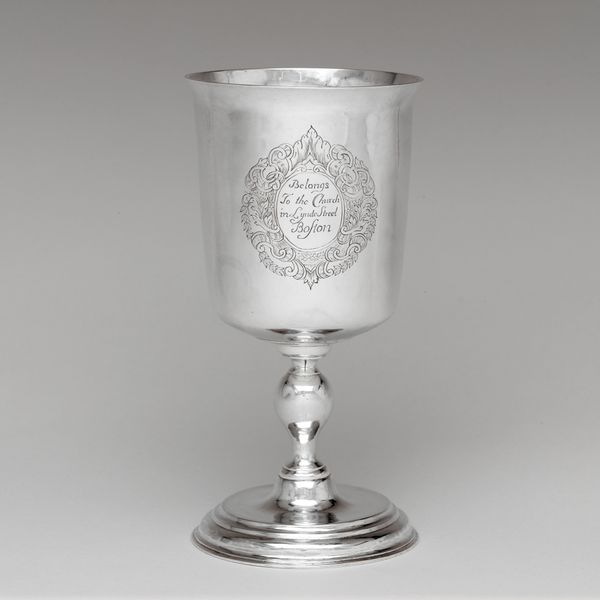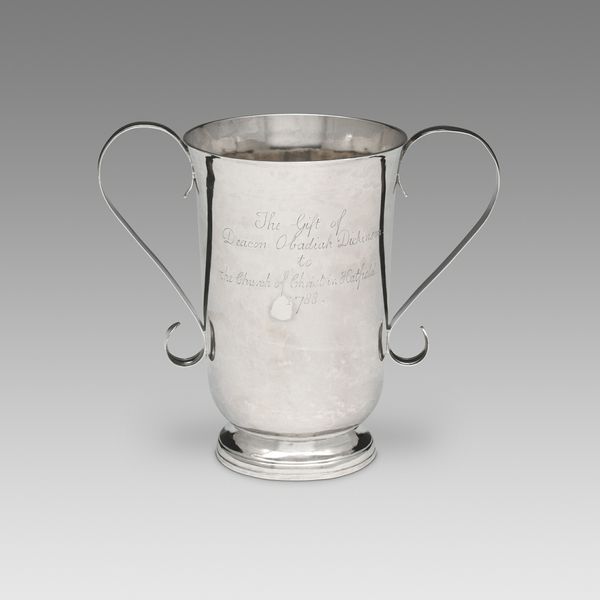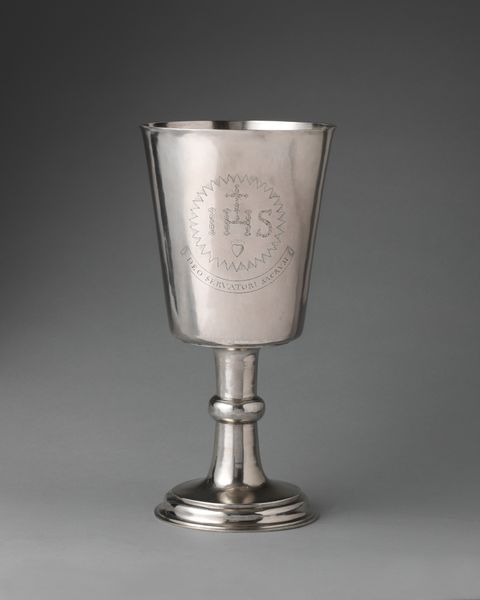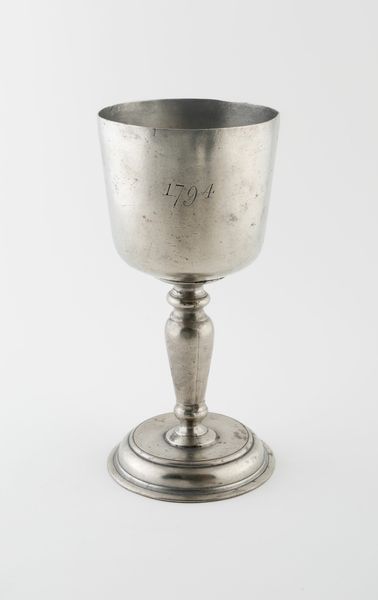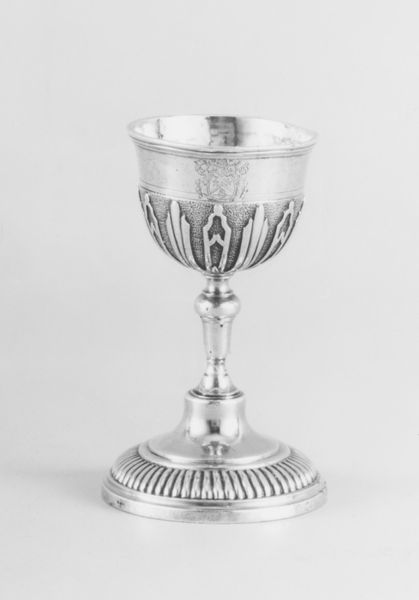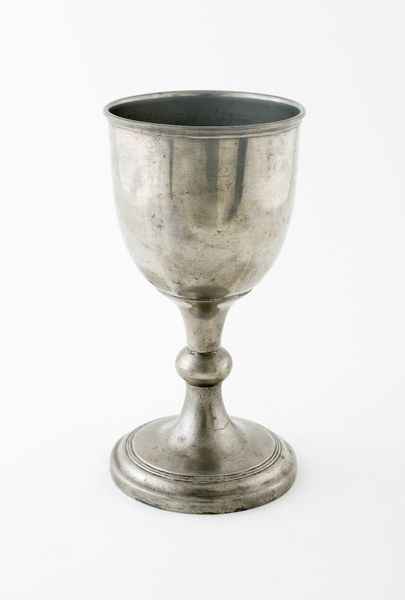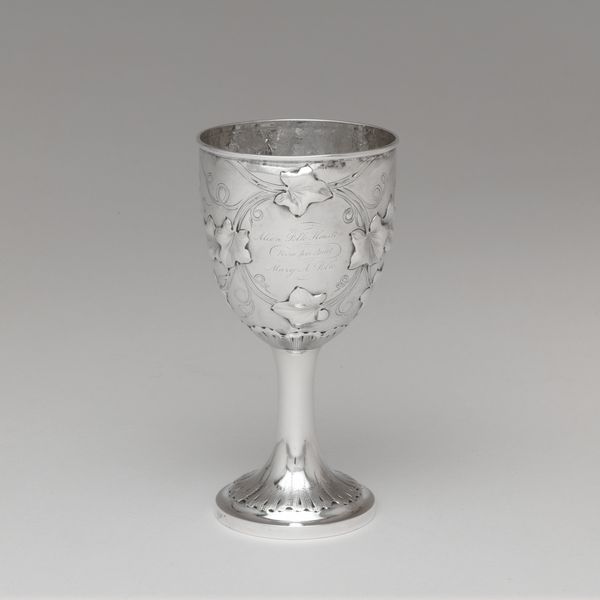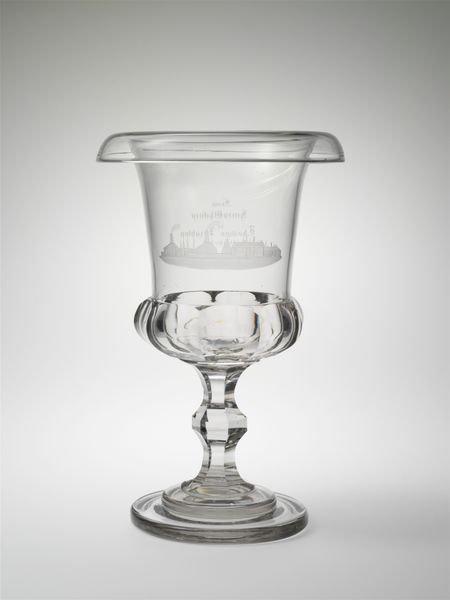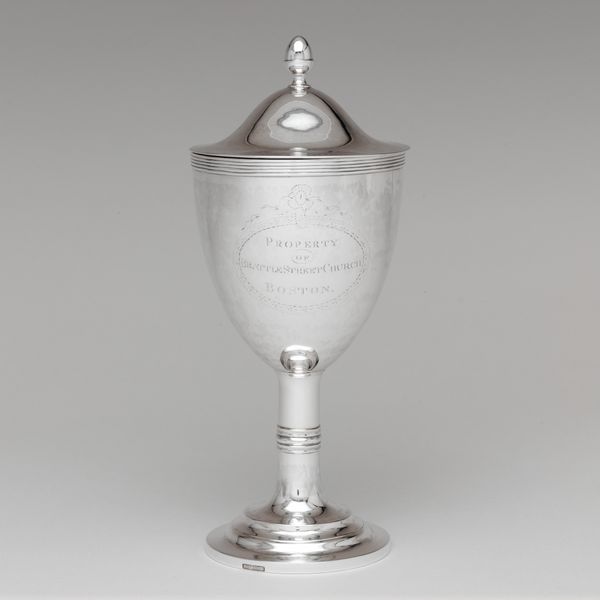
silver, metal, ceramic, sculpture
#
portrait
#
silver
#
metal
#
ceramic
#
sculpture
Dimensions: Overall: H. 5 5/8 in. (14.3 cm); 6 oz. 5 dwt. (193.8 g) Lip: Diam. 3 1/4 in. (8.3 cm) Base: Diam. 3 5/16 in. (8.4 cm)
Copyright: Public Domain
Editor: Here we have the Standing Cup, made between 1800 and 1830. It’s silver, and very shiny! It has an inscription which appears to read "Presented to the Suffolk Street Chapel by Sarah Blake". The object looks like a trophy or chalice. What can you tell me about this cup? Curator: Looking at this Standing Cup through a historical lens, I see more than just a shiny object. This isn’t *simply* about admiring its beauty; it's about understanding its role within the social fabric. Cups like this were often commissioned to solidify status or commemorate affiliations, particularly with religious institutions. Think about it - what did donating to religious causes communicate about the donor at the time? Editor: That's interesting. So the inscription showing it was donated to a chapel by Sarah Blake suggests it was probably important for her image in some way? Curator: Exactly. Donations weren’t simply acts of charity, but were displays of power, piety, and often a way to gain social capital. What can the choice of materials and the quality of the craftsmanship suggest? Was it merely about functionality, or was it intended to project something more? Editor: The silver material suggests that it was intended to be decorative or an object of high quality and the engraving indicates a personal touch. That’s really made me think about gifts and donations very differently. I now appreciate it beyond its shiny appearance. Curator: Yes. It prompts us to consider the interplay of social expectations, religious institutions, and personal ambition during the period it was created. Hopefully we can look past the materials used to examine social histories.
Comments
No comments
Be the first to comment and join the conversation on the ultimate creative platform.
